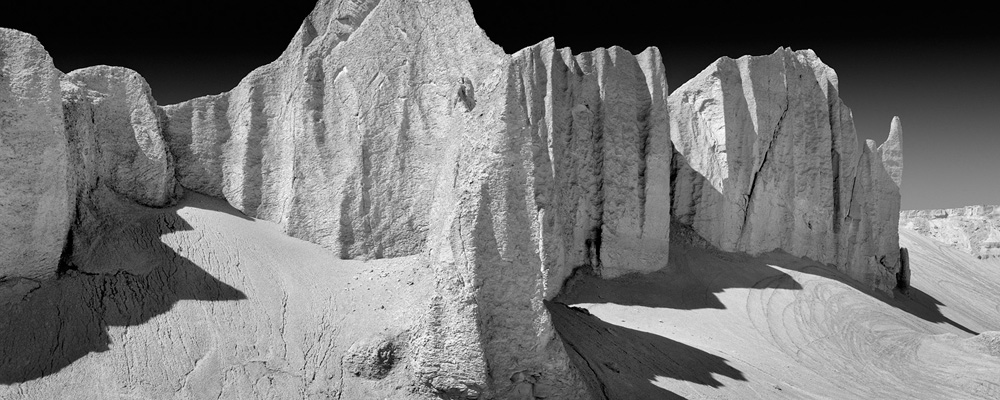Photography: Rule #1
by Huntington Witherill
Hard as it was to say goodbye to a pet bias, I felt relieved. A space opened somewhere. –Minor White
Despite the fact that there is a great amount of art that I will likely never enthusiastically embrace, I'm always amused on those occasions when I come to the realization that a specific dislike for certain art has been motivated by my own ignorance.
Well intentioned but ill-conceived biases – too often precipitated through blind adherence to some form of entrenched artistic "rule" or axiom – have occasionally precluded me from engaging certain types of photography that might otherwise have served to greatly enhance my own life experience. Though not always the case, such biases revealed themselves to be the culprit more often than I like to admit, particularly during my formative years as a photographer.
Now, you might think I'm trying to suggest that all art has merit and that all art remains worthy of your attention. I'm not. Well-reasoned biases are an integral part of rational discernment and personal taste when it comes to matters of art. After all, personal bias is the very portal through which each of us is able to perceive art in an individually meaningful way. At the same time, not all biases are rationally conceived. And those ill-conceived biases can lead us to dismiss a great amount of art that might otherwise carry the potential to enhance our own circumstance through increased awareness, personal insight, aesthetic enrichment, and spiritual awakening.
In my own experience with art, I've found that that which I dislike is often that which I simply do not (yet) understand. By endeavoring to learn more about what it is that is actually motivating me to reject a particular approach to photography, I am occasionally led to the disillusionment of what is ultimately discovered to be an irrational bias. By learning more about the art, itself, I am then rewarded with far greater appreciation, potential acceptance (and dare I say, even enjoyment) of that which I had previously rejected through my own lack of discernment.
As an illustration, what follows is a rather blatant example of a particularly ill-conceived bias that managed to plague me for nearly the first full year of my experience as a photographer:
Sometime in early 1970, I was told (or perhaps I read this somewhere) that cropping one's photographs by any means other than through the strict use of camera placement was a sin from which redemption was simply not possible. Cropping a negative in the enlarger (enlarger, meaning Lightroom or Photoshop to you younger readers) was a sure-fire way to be branded a rank neophyte. Simply put: Photography: Rule #1: "Professional photographers do not crop their photographs!" So, of course, not wanting to be labeled a novice (and not knowing any better at the time due to actually being a novice), I faithfully and blindly bought into what eventually proved to be an absurd proposition.
As a result of having bought into the aforementioned admonition, I cannot recall how many times during the first year of my photography education, I rejected potential photographic opportunities (or subsequently discarded the resulting negatives) simply because a particular scene refused to strictly conform to the 8x10 frame. My guess would be that there were more than several hundred such instances that arose. Thus, for the entire first year of my photographic development I had handicapped my own potential growth in service of a personally held bias that turned out to be completely illogical. (What a waste!)
Finally, sometime in early 1971, I came to the stark realization that not everything in the natural world had been created to fit within the constraints of a fixed proportion. (Actually, I think it was Paul Caponigro's landmark photograph: Running White Deer that finally caused me to re-evaluate my own bias in this regard). There was no logical reason to continue arbitrarily limiting all of my compositions to the constraints of the fixed camera frame. And thank goodness for that! I had finally managed to extract myself from Rule #1 in Photography. (What a relief.)
Now, to be fair, and so as not to leave the impression that I routinely search for compositions from within the interior reaches of my negatives and digital files, I use the following method for cropping whenever a single-frame composition is desired:
Under normal circumstances each photographic composition consists of two outside dimensions. Those dimensions are of course height and width. Typically, one of those two dimensions will always be able to be successfully cropped – strictly within the camera frame – while the other may not (at the same time) fit within the remaining dimension associated with the overall frame. When this situation occurs, I simply choose the dimension that requires the additional area of coverage and I position the camera to strictly crop (in-camera) to that particular dimension. And of course, I'm then left with the other dimension showing unwanted area outside the limits of my intended composition. That area will be summarily cropped in "post-processing." It's a simple method for cropping a single-frame composition that allows one to use the maximum available camera coverage (for reasons of optimal image quality) while also allowing for the reality that not every scene will fit snugly into the same fixed proportion. And most important, it is a method that does not (in any way) imply a haphazard approach. It's a procedure formulated through careful consideration, an acceptance of reality, and the understanding that meticulous attention is best paid to the final composition prior to tripping the shutter.
There are, of course, any number of other legitimate and well-reasoned methods for cropping photographs (to include multi-frame composites, image stitching, etc.) but those methods remain outside the scope of my originally intended point.
So, back to my original point… (What was my original point, anyway?) Oh I know… my own ignorance (ahem). Once I was able to free myself of the arbitrary constraints associated with Rule #1 in Photography, I quickly picked up on the fact that most every other rule in art was there to be thoroughly examined and carefully considered, prior to being exercised. And, ultimately, what I've come to find is that there are very few instances in which any rule (pertaining to art) will apply in all circumstances.
Obviously, it's a good idea to know what the rules of photography are so that you can then use them to your best advantage. However, when those same rules inevitably don't work to your advantage, I highly recommend that you drop them... like a hot rock! And, if my own experience is any indication, it's also probably a good idea to keep your eyes peeled for any rule that you may be holding onto that even hints at being in conflict with basic common sense. While the rules are there to help, they can, with overzealous adherence, too easily lead to a surprising amount of lost opportunity.
Come to think of it, I'd like to suggest that when it comes to photography (or any other form of art for that matter) Rule #1 should more properly be expressed as follows: Rule #1: The words "always" and "never" should be universally greeted with a healthy dose of unbridled skepticism!
Huntington Witherill

